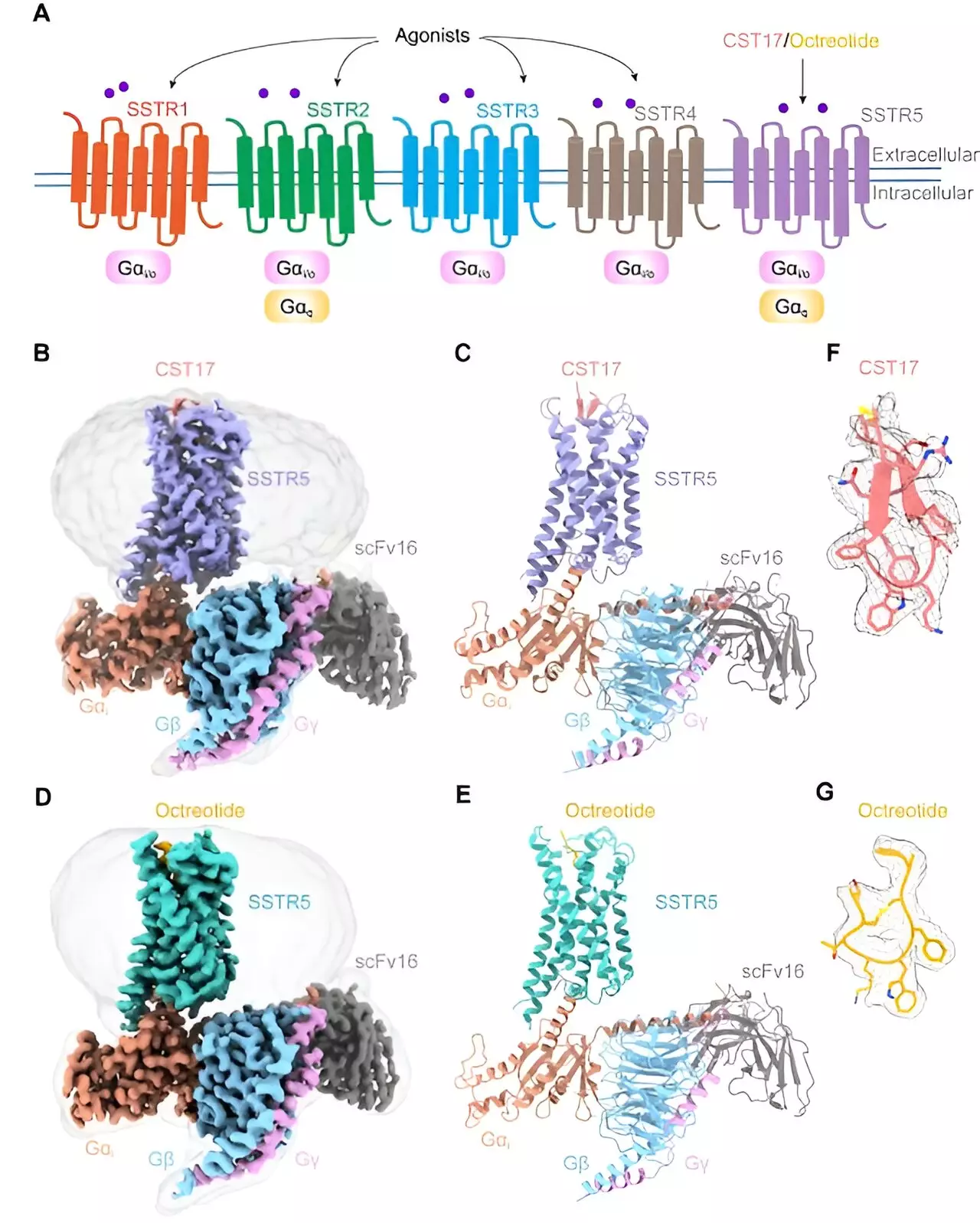Somatostatin receptors (SSTRs) are an essential family of G protein-coupled receptors (GPCRs) responsible for controlling hormone secretion and preventing tumor growth. Within the five subtypes of SSTRs, SSTR5 plays a critical role in regulating the release of hormones like adrenocorticotropic hormone, prolactin, and growth hormone, particularly in the pituitary gland.
A recent study published in PNAS conducted by a research team led by Eric H. Xu and Zhao Lihua from the Shanghai Institute of Materia Medica revealed the three-dimensional structures of SSTR5 in complex with both a natural neuropeptide agonist, cortistatin-17 (CST17), and a clinically-approved drug, octreotide. Using single-particle cryo-electron microscopy techniques, the researchers elucidated how these ligands activate SSTR5 and initiate downstream signaling cascades.
Implications for Therapeutic Interventions
The study’s findings shed light on the molecular mechanisms behind SSTR5 activation by CST17 and octreotide. By determining cryo-EM structures of SSTR5 bound to these agonists, the researchers discovered that the binding of the ligands leads to a conformational change in the receptor, resulting in the activation of G proteins. This crucial insight provides a foundation for developing novel, highly selective SSTR5 modulators with minimal off-target effects.
Understanding the activation mechanisms of SSTR5 and its interaction with specific agonists like CST17 and octreotide opens up new therapeutic possibilities for treating various conditions related to hormonal imbalances. Conditions such as acromegaly, pituitary adenomas, neuroendocrine tumors, and other hormonal disorders could potentially benefit from the development of targeted SSTR5 modulators based on the insights gained from this study.
The study’s comprehensive structural and functional analyses of SSTR5 provide a solid foundation for future research aimed at developing precision therapies for endocrine disorders and tumors. By elucidating the intricate mechanisms of hormone regulation and tumor growth inhibition mediated by SSTR5, this research contributes to the growing body of knowledge in the field of molecular pharmacology and holds significant promise for improving clinical outcomes in patients with hormone-related conditions.


Leave a Reply